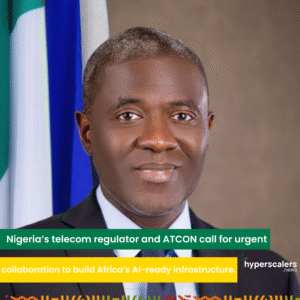Plans to deploy an underwater data center in South Korea have made significant progress with the signing of a business agreement between the Korea Institute of Ocean Science and Technology (KIOST), Ulsan Metropolitan City, GS Engineering & Construction (GS E&C), and POSCO. The project will develop an eco-friendly technology for constructing an underwater data center complex that could house up to 100,000 servers on the seabed.
The partnership’s goal is to drive innovation in the design, construction, operation, and maintenance of underwater data centers, with a strong focus on energy conservation and carbon neutrality. The companies involved also aim to secure national funding to support research on the development of underwater data centers and to install and test pilot systems.
KIOST President Lee Hee-Seung expressed optimism about the project’s potential: “KIOST is expected to take the lead in developing related technologies to build an eco-friendly underwater data center, thereby strengthening the competitiveness of the data industry for carbon neutrality and energy conservation, and contributing to revitalizing the local economy.”

The concept of the underwater data center was first introduced by KIOST and Ulsan in April 2022, as part of a broader underwater city initiative backed by the South Korean government. The project has since expanded to involve 23 companies, including SK Telecom and Lotte Engineering.
The joint research team is working to finalize the detailed design of the project, which will include research spaces, a data center module, and a residential module for people living on the submerged platform. The goal is to complete the design by the end of 2024.
The first test module is scheduled to be deployed 30 meters underwater off the coast of Sinri Port in Seosaeng-myeon, Ulju-gun, Ulsan. The facility will accommodate three residents, marking a significant milestone for the project.
While underwater data centers are still a relatively niche concept, they have attracted increasing interest from companies around the world, with operators such as Microsoft, Highlander, and Subsea Cloud. However, the KIOST project stands out for its ambitious design, which plans not only to submerge the data center but also to include living quarters for personnel underwater —a feature not typically seen in other underwater projects.
Other underwater data center initiatives include Chinese company HiCloud, which has deployed commercial modules 35 meters deep off the coast of Hainan Province. HiCloud plans to install a total of 100 modules. Similarly, the startup Subsea Cloud has already launched 13,500 servers at underwater locations across Asia, which are targeted for use by AI and gaming companies. The company claims that its servers have no impact on the ocean’s temperature and expects to expand operations next year.
California-based NetworkOcean is planning a more modest deployment—a 500kW data center contained in a capsule that will be submerged in San Francisco Bay.
Meanwhile, Microsoft, once a prominent player in the subsea data center space, appears to have shifted its focus. The company’s ambitious Project Natick, which saw a subsea data center deployed off the coast of Scotland in 2018, has been officially concluded. In a statement earlier this year, Noelle Walsh, head of Microsoft’s Cloud Operations + Innovation (CO+I) division, confirmed the end of the project, though the company had open-sourced patents related to submerged data centers in 2021.
The KIOST underwater data center project reflects a growing interest in leveraging the unique conditions of the ocean to create sustainable, energy-efficient data infrastructure. The use of seawater for natural cooling and the potential for renewable energy generation from tidal or wave power are central to the project’s eco-friendly focus. If successful, it could provide a model for future data centers that minimize environmental impact while meeting the growing global demand for computational power.
As KIOST and its partners continue to push forward with the project, it marks a bold step in the exploration of alternative data center models, combining cutting-edge technology with environmental sustainability.





